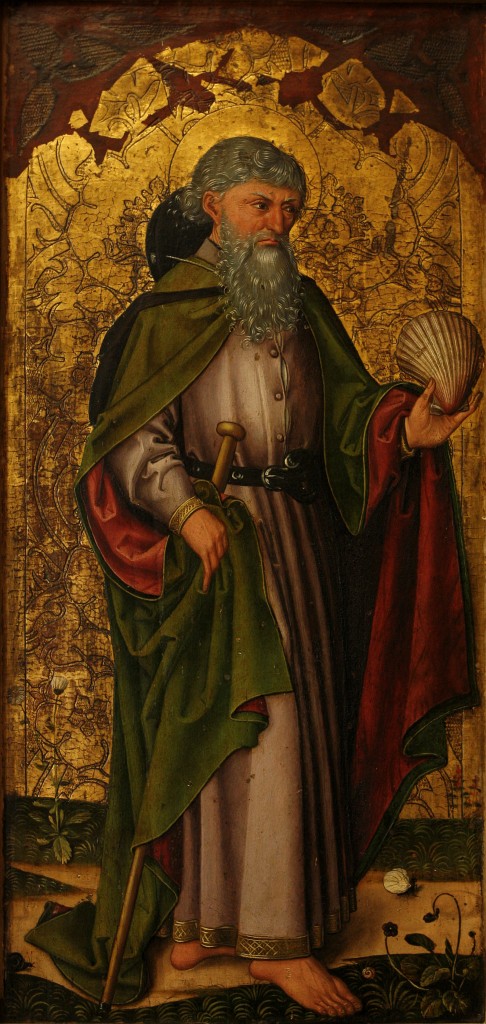Apostle
Santiago, Saint James the Greater, was one of Christ’s Twelve Apostles. He and his brother John were natives of Galilee, sons of the fisherman Zebedee and his wife Salome, whom the Eastern Christians name Myrrh-bearer.
They were disciples of John the Baptist, but the Baptist sent them to Jesus.
So fiery were these two brothers, Saints James and John, that Christ named them “Sons of Thunder” (Mark 3:17).
 Along with Saint Peter, James and John made up Christ’s closest disciples. These three were with Him at many key moments in His ministry, including the Transfiguration (Matt 17, Mark 9, Luke 9:28ff) and even to Gethsemane (Mark 14:33).
Along with Saint Peter, James and John made up Christ’s closest disciples. These three were with Him at many key moments in His ministry, including the Transfiguration (Matt 17, Mark 9, Luke 9:28ff) and even to Gethsemane (Mark 14:33).
After the Crucifixion and Resurrection of Christ, the Acts of the Apostles tells how Herod had James killed with the sword (Acts 12:2).
So much for history. Now for legend.
Legend has it that prior to his martyrdom, James embarked on a missionary journey to northwestern Hispania. It was not particularly successful, and the Medieval Golden Legend records that he only made nine disciples.
After this mission, he returned to Jerusalem. The fiery-tempered James ran afoul of King Herod, and met his death. And at this point, the story takes an even stranger turn.
From the Golden Legend:
When the blessed Saint James was beheaded, his disciples took the body away by night for fear of the Jews, and brought it into a ship, and committed unto the will of our Lord the sepulchre of it, and went withal into the ship without sail or rudder. And by the conduct of the angel of our Lord they arrived in Galicia. …
And then the disciples of Saint James took out his body and laid it upon a great stone. And anon the stone received the body into it as it had been soft wax, and made to the body a stone as it were a sepulchre.
The site was rediscovered in about 840, and the first pilgrimages to Santiago de Compostella began shortly thereafter. Saint James became the patron of Christian Spain, and in his name the Islamic Moors were eventually driven out of the country.
Is the legend true? The Church has never ruled one way or the other. We don’t actually know if the bones in the tomb are those of the Apostle, but over more than a thousand years millions of pilgrims have come here to honour the memory and the sanctity of this man who was Christ’s Apostle.
Perhaps that is enough.
